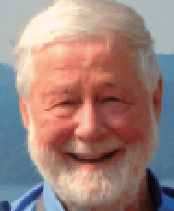
I’ve been on the Board of the Quetico Superior Foundation for several years, including being one of the “Group of 15” that founded Heart of the Continent Partnership, manager of the White Pine Initiative, a member of the International Community Congress and the International Joint Commission’s Rainy Lake Watershed Advisory Group. These and many other roles through Quetico Superior have been incredibly rewarding for me as I increasingly value and work to protect the remaining wild places in which I believe most of the best personal learning and growth can occur. It may, in the spirit of native people’s Great Circle, have enabled me to put back in as much or I hope maybe even more than I have taken out.
What other ways have you been active in the Quetico-Superior Region?
We moved to Minnesota because of the excellent canoe tripping country in the Quetico and BWCAW as Associate Director of the Minnesota Outward Bound School in 1969. That included a winter ski crossing of the BWCAW (Kekekabic Trail) and numerous canoe trips throughout. In 1973 I founded “Country Ways” for folks worldwide to make their own outdoor gear from kits. I’ve been on the board of Camp Menogyn, visitor or resident on Lake of the Woods since 1976, and we have a cabin on Seagull (complete with “the blowdown” and the Ham Lake Fire). As director of Wilderness Canoe Base (Gunflint Trail) I developed its first safety program, Island Camp, AYH’s first “destination” youth hostel and greatly increased youth-at-risk participation.
What is the most pressing issue you see in the region today?
There are several: global warming proves to be a macro-crisis too big for us to see clearly or admit to easily, yet it’s changing almost everything. Driven by petro-energy dependence, we could start with use reduction, but we don’t even do much of that.
Exotic Species such as zebra and quagga mussels, Eurasian milfoil, purple loosestrife, etc. have us responding way too late, if at all. If an area’s fiscal future depends on tourism, and that’s the main driver encouraging the area to strive to preserve its natural areas and assets (woods & waters), how can they succeed if these very assets are ruined?
Mining and oil sands pose the same quandary and are part of both the petro-dependence and fresh water availability crises. We have to look hard at uncontrolled population growth coupled with the threats represented by inappropriate development, choices between resource needs vs. resource profits wants, and the increasing desertification growing in much of the world.
Bureaucratic inability to act in time or properly concerns me greatly. We have recently experienced several occasions where old paradigms and dated computer models were relied upon when many/most of us realize that these times are NOT the old times. This has been especially true with underestimating the severity and unpredictability of recent weather events, including fires.
Youth becoming indoor creatures in some ways scares me the most. They no longer go (or are not allowed to go) outdoors really at all, switching from being outdoors to becoming indoor, sheltered and “screen-dependent.” In this alleged age of communication I see it actually being the Age of Isolation as face-to-face personal contact and experience vanish.
This article appeared in Wilderness News Winter 2012 Issue >

